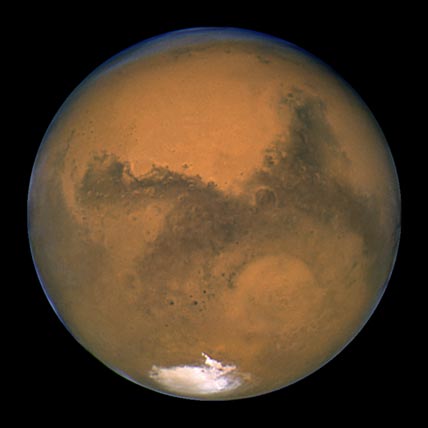
NASA's Hubble Space Telescope took this snapshot of Mars 11 hours before the planet made its closest approach to Earth. The two planets are 34,648,840 miles (55,760,220 km) apart. This image was made from a series of exposures taken between 6:20 p.m. and 7:12 p.m. EDT Aug. 26 with Hubble's Wide Field and Planetary Camera 2.
Courtesy NASA, J. Bell (Cornell Univ.), and M. Wolff (SSI).
This week seemingly all skygazers have turned toward Mars — the Hubble Space Telescope included. On August 26th, controllers aimed Hubble at the red planet and captured a series of images using the Wide Field and Planetary Camera 2 between 6:20 and 7:12 p.m. Eastern Daylight Time, only 11 hours — and 2,422 miles — shy of Mars's closest approach to Earth in more than 60,000 years. The color-composite photo was assembled from frames taken with red, green, and blue filters. The images were quickly processed and released this morning.
During the exposures Mars was 34,648,840 miles (55,760,220 kilometers) away from Earth. With a resolution of 8 miles per pixel, the view shows numerous impact craters, many of which have dark floors. The murky swath on the left side of the disk is Sinus Meridiani; the triangular one on the right is Syrtis Major. The Hellas impact basin lies just below the dark features.
 0
0
Comments
You must be logged in to post a comment.